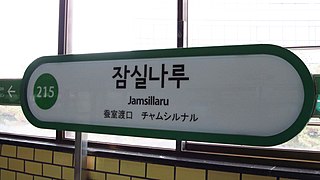
Jamsillaru Station is a station on the Seoul Subway Line 2. Its former name literally means "in the fortress," probably referring to the nearby Mongchon and Pungnap earthen walls, and it was also named from Seongnae-cheon. It is also the closest subway station to the Asan Medical Center.

Yeongdeungpo District is an administrative district in southwest Seoul, South Korea. Although the origin of the name is uncertain, the first two syllables are thought to be from "yeongdeung" (靈登) or "divine ascent", a shamanic rite. The third syllable is "po", representing the bank of a river (浦), referring to the district's position on the Han River. The 2006 population was 408,819.
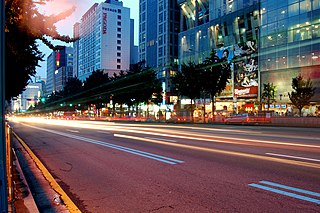
Seodaemun District is one of the 25 districts of Seoul, South Korea.

Songpa District is a district of Seoul, South Korea. Previously known as Wiryeseong, the first capital of the ancient kingdom of Baekje, Songpa is located in the southeastern part of Seoul. With roughly 647,000 residents, Songpa is also the largest district in Seoul by population.

Sincheon-dong or Sincheon is a neighbourhood (dong) in Songpa-gu, Seoul served by Jamsillaru Station on Seoul Subway Line 2. The name means "new stream" and is a name for several other places in South and North Korea.

Gaepo-dong (Korean: 개포동) is a ward of Gangnam District, Seoul, South Korea, south of Dogok-dong and Daechi-dong. Gaepodong is divided into three "dong": Gaepo 1, 2, and 4 dong. Gaepo 3-dong had been merged with Gaepo 2-dong in 2009.

Jamsil-dong is a neighbourhood, dong, of Songpa-gu, Seoul, South Korea. Its name is derived from silkworm breeding during the Joseon dynasty. Jamsil translates to a room or place for sericulture. The state encouraged people to raise silkworms, so founded Dongjamsil in the east vicinity of Seoul.
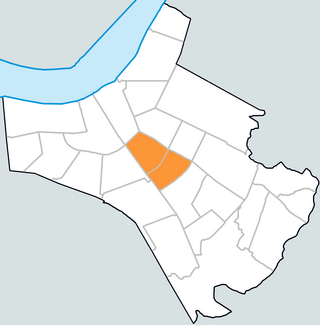
Songpa-dong is a neighbourhood, dong of Songpa-gu, Seoul, South Korea. There are three assumptions on the etymology of the name. One is that it may come from "Songpa Naruteo"
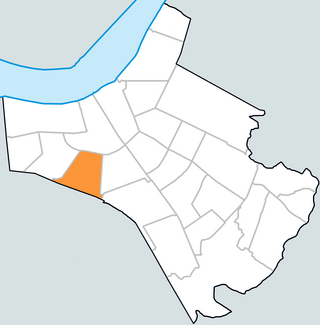
Samjeon-dong is a neighbourhood, dong of Songpa-gu, Seoul, South Korea. The name originated from the fact that it once had only three fields.

Jangji-dong is a neighbourhood, dong of Songpa-gu, Seoul, South Korea. The old name of the dong was janbeodeuri (잔버드리), derived from jan beodeul where the species grew a lot.
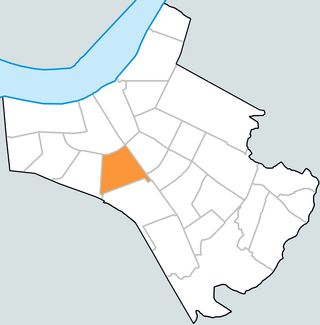
Seokchon-dong is a neighbourhood, dong of Songpa-gu, Seoul, South Korea. The current dong name literally means "stone village" in hanja named for the old name, dolmari (돌마리), because the region is to said to have much stone.

Garak-dong is a dong (neighborhood) of Songpa District, Seoul, South Korea. The exact etymology is unknown but said that the town was once called garakgol (가락골).

Macheon-dong is in the dong neighbourhood of Songpa-gu, Seoul, South Korea.

Munjeong is a neighbourhood (dong) of Songpa-gu, Seoul, South Korea.

Geoyeo-dong is a dong (neighborhood) of Songpa District, Seoul, South Korea.
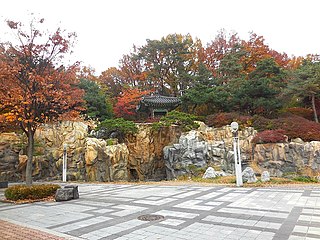
Ogeum-dong is a neighbourhood, dong of Songpa-gu, Seoul, South Korea.

Bangi-dong (Korean: 방이동) is a neighborhood, dong of Songpa District, Seoul, South Korea.

Oryun-dong is a neighbourhood, dong of Songpa-gu, Seoul, South Korea.

Jamwon-dong is a dong, neighbourhood of the greater Gangnam area Seocho-gu in Seoul, South Korea. Until 1988, Jamwon-dong was under the jurisdiction of Gangnam-gu. Jamwon-dong is popular for its mulberry trees and silkworms, whose cocoon is used to make fabric for clothing. As a legal-status neighborhood, Jamwon-dong includes Banpo 3-dong and Jamwon-dong.

Banpo-dong is a dong, neighborhood of Seocho District, the greater Gangnam area in Seoul, South Korea. Banpo-dong is divided into five different dong which are Banpobon-dong, Banpo 1-dong, 2-dong, 3-dong and 4-dong.






















